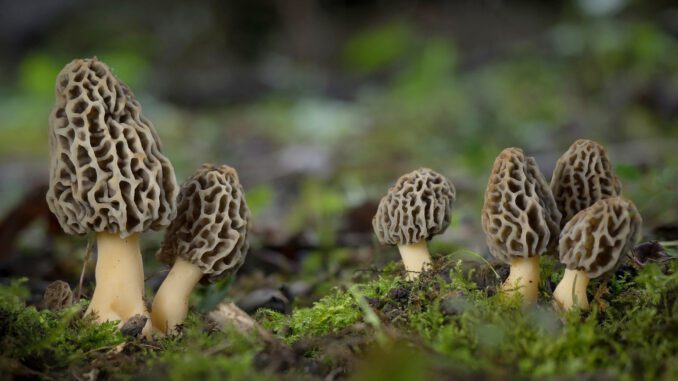
Where to find morel mushrooms? You’re in the right place!
Let’s get started!
Do Morel Mushrooms Grow In Your State?
For the USA: if you live in Iowa, Missouri, West Virginia, Montana, Indiana, Wisconsin, Michigan, Nebraska, Idaho, Minnesota, Kansas, Oregon, Ohio, Oklahoma, Illinois, South Dakota, Wyoming, Alaska, Kentucky, Arkansas, Vermont, Washington, foraging will be easier and you are more likely to find morels!
However, you will still have chances to find morels in states not mentioned. Keep hope!
Want to know where the best morel spots are near you? Discover our Morel Maps here!
Where To Find Morel Mushrooms?
The Best Places
- Recent Clear-Cut Areas: It’s no surprise! When a tree is cut, it releases a significant amount of sap into the soil, and the wood chips from the cut retain moisture. This creates the perfect habitat for morel mushrooms.
- Disturbed Lands: These areas are often a result of agricultural machinery or even the activity of moles! Soil disturbance usually leads to tree root damage and sap release into the soil – conditions that morels thrive in.
- Water Sources: Sandy soils and high humidity are commonly found in the vicinity of water sources – an environment that morels favor.
- Recently Burned Zones: Abundant carbon and minimal competition due to land sterilization make recently burned areas a perfect combination for a morel explosion!
Soil
The key takeaway about Yellow morels is that they typically thrive in neutral to slightly alkaline soil.
So, how can you confirm the soil’s pH while foraging? It’s quite simple: Look for signs of neutral to slightly alkaline soil by observing the abundant presence of plants that prefer these conditions. Keep an eye out for neutral-loving and calcicole plants like ground ivy, hawkweed, wild garlic, white anemone, stinking hellebore, male orchis, and primrose.
Want to know where the best morel spots are near you? Explore our Morel Maps here!
Climate
Morels prefer well-exposed areas (preferably south-facing) in the shade of trees. Additionally, what triggers their fruiting is temperature fluctuations. An oscillation from around 41 °F at night to 59-68 °F during the daytime creates an ideal environment for initiating morel fruiting.
However, accurately predicting the exact timeframe for morels to mature is a challenge. Waiting for a period of 7-10 days after the fruiting phase seems reasonable for a fully developed mushroom to emerge!
Trees
Morels grow near deciduous and conifer trees. The hardwoods most commonly associated with morels are ash, aspen, maple, apple, hornbeam, locust, elm, hazel… (This list is not exhaustive but provides an excellent starting point). The conifers commonly linked with morels are spruce, fir, pine, and larch.
Season
When to look for morels? The ideal time to go for morels is from the end of March to the end of May, especially in the plains. Of course, your state will make a difference at the start and the end of the season.
Find Morels With Our Morel Mushroom Maps!
Looking to get ahead of other morel hunters? Find the prime morel spots directly with our maps! Explore our Morel Mushroom Maps here!








